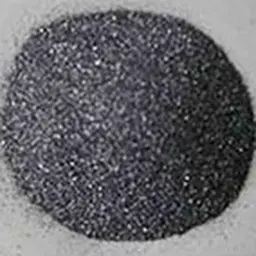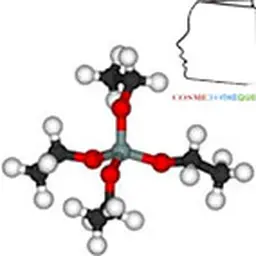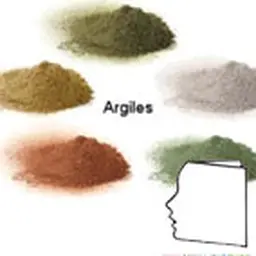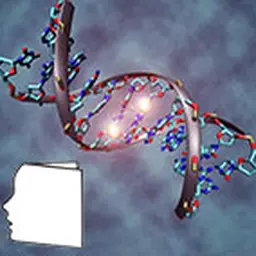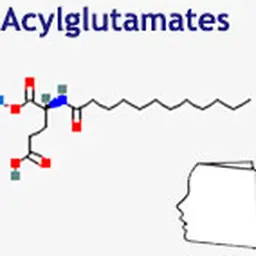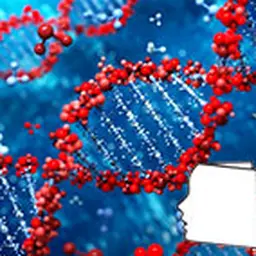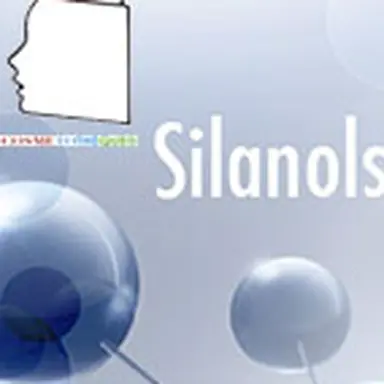
Silicon, a very abundant element on the Earth's surface and widely used in cosmetics through various derivatives, has also been used as an active ingredient for many years. Confusion is often made between organic silicon derivatives and silicon polymers. This article clarifies the role of specific derivatives, silanols, and their role as assets. Thanks to the contributors.
The first studies on the role of silicon focused on animal feed. For example, chickens fed on silicon-depleted feed showed very slow growth. Despite the difficulties in measuring silicon in the 1970s, this element was quickly discovered and measured in mucopolysaccharides and then in various tissues by several American and French researchers: Schwartz[1], Loeper[2], Carlisle[3], Charnot.
Studies on the aorta have shown a close correlation between tissue disorganization and decrease in silicon content. This appeared to be closely related to glycoproteins and appeared to interfere with the organization of extracellular matrices. The first idea that arose immediately was to try to see if a silicon contribution could allow a modification of this state. The difficulty has been to develop a product containing silicon that is stable and above all that does not polymerize. It was therefore a chemical approach totally the opposite of silicone chemistry.
In fact, since the chemistry of carbon is not very different from that of silicon, and silanol is to silicon what alcohol is to carbon, it is to silanol that the bulk of the work has focused. What was needed was to ensure the long-term stability of these silanols (prevent them from polymerizing) and monitor their ability to be assimilated by the tissues.
A series of patents has been filed since the 1970s, first in the pharmaceutical field, then more specifically in cosmetics, by the company Exsymol. These patents related to synthesis techniques and biological properties demonstrated after use of this family of silanols. Silanol has thus become both a molecular entity and a true technology.
To ensure the stability of the silanols, the methylsilanetriol molecular entity had to be coupled to a structure with available hydroxyl or carboxylic functions. The first pharmaceutical molecule was developed in the early 1970s from salicylic acid in conjunction with an ophthalmology laboratory, under the name Dulciphak. This eye drops is still marketed.
The first cosmetic silanol was also developed in the 1970s. In addition to having the required chemical structure, the stabilising molecule had to have a recognised potential for cosmetic activity itself and, if possible, an image that would enhance the market image. This is how alginic acid, extracted from laminar algae, was retained. A selection of the various alginic acids available on the market led to the standardisation of the silanol stabiliser molecule by carrying out partial depolymerisation of this polymannuronic acid. Thus was born Algisium. The L'Oréal group was one of the first users of this silanol in the late 1970s. This ingredient is still present, more than 40 years later, in the care products of many cosmetic brands.
The first studies conducted by Exsymol, first of all on cell cultures, in the 80s, highlighted the interest of a silicon contribution in the multiplication of fibroblasts in an impoverished medium: the characteristics of a culture in an optimal medium were found. Subsequent studies have shown that silicon improves the organization of cell membranes. Their order parameters were improved. One could thus hope for a better resistance of the cells to radical attacks. These studies were complemented by the role of silicon in intercellular communications.
The following multiple researches were carried out, on reconstructed epidermis, then on more sophisticated 3D models, lattices and human explants. The close correlation that existed between tissue quality and silicon content obviously oriented towards tissue restructuring and more generally towards slowing down tissue ageing.
This research on the biological activity of silanols, along with bioavailability studies and all the required toxicological tests, allowed the exploitation of these new molecules, all the more so as cosmetics took a significant turn in the 1980s by no longer being only a decorative cosmetic. At that time, the first notions of"preventive treatment" appeared.
Hundreds of tons of silanols are found in most of the products of the major international cosmetic brands. Other specific molecules of the same family have been developed and directed towards the strictly medical field, rheumatology and ophthalmology.
References 1] Schwarz K., Proc. Nat. Acad. Sci. USA, Vol. 70, No. 5, pp. 1608-1612, 1973. A Bound Form of Silicon in Glycosaminoglycans and Polyuronides . 2] Loeper J., Loeper J., Lemaire A., La Presse Médicale, 74, No. 17, pp 865-868, 1966. Study of silicon in animal biology and during atheroma . 3] Carlisle M., Federation Proceedings, Vol. 33, No. 6, 1974, Silicon as an essential element . 4] Charnot Y., Pérès G., Séance du 4 novembre 1970 de la Société d'Endocrinologie, pp 397-402. Contribution to the study of endocrine regulation of silicic metabolism .
|
We owe this contribution to André Franco André graduated as a chemical engineer from the École Supérieure de Chimie Industrielle de Lyon in 1973. He joined Exsymol in Monaco in 1976, participated in its creation and development, as Technical Director, then General Manager, until 2012. He is co-author of numerous patents, in particular on nanoparticles and silicon derivatives for use in pharmaceuticals and cosmetics. |
The current range of silanols
By Christophe Paillet, Communication and Customer Relations Director
The versatility of silanol technology has made it possible to develop a range of specialities characterised by their silicon content and by the presence of a substance selected for its cutaneous interest, and conferring the individuality specific to each silanol. More than thirty references combining silicon and amino acids, vitamins, uronic acids, etc., make up the catalogue of contemporary silanols. These specialities include Algisium, Caféisilane, D.S.H., Hydroxyprolisilane, etc. (See all specialties in the table below).
All silanols have the characteristic properties of organic silicon described above, and the associated substances confer a specificity that makes it possible to select one silanol or another according to the specific effect sought. This is how Caféisilane (caffeine-based silanol) is favoured for an anti-cellulite and firming application, or D.S.H. (silanol based on hyaluronic acid) for a hydrating application, or Hydroxyprolisilane (silanol based on hydroxyproline) for a powerful firming effect, or Algisium ("silanol vedette" based on alginic acid) for a multiple effect…
Silanols are, in general, water soluble, but certain specific preparation processes allow to propose fat soluble, or even solid versions.
A small overview of the distribution networks (selective, supermarkets, beauty salons, Internet, direct sales…), but also of the databases available online, makes it possible to realize the exhaustive use of silanols in a very large number of products, and this since their creation.
|
ASSETS |
INCI Name |
Cosmetic function |
|
ALGISIUM C |
|
Multi-activity - skin restructuring |
|
ARGISIL C |
Silanetriol Arginate |
|
|
ASCORBOSILAN C |
|
Potentilizes Vitamin C (antiradical) |
|
CAFEISILANE C |
Silanetriol Alginate and Caffeine |
Potentilizes caffeine (slimming, firming) |
|
CAPILLISIL HIGH CONC |
Silanediol salicylate |
Hair fall prevention device |
|
D.S.H.C N |
Dimethylsilanol Hyaluronate |
Moisturizer |
|
EPIDERMOSYL |
|
Filler like: boosts epidermal renewal |
|
G.P.S. |
|
Osmoregulator |
|
HYDROXYPROLISILANE C N |
|
Firming (wrinkles, stretch marks, body) |
|
LASILIUM |
|
Potentilizes lactic acid |
|
LIPOSILIOL C |
|
Lipophilic version of silanol |
|
MS HC |
|
Solid version of silanol |
|
PHYKOSIL 2000 |
|
Natural version of silanol |
|
PRO DSB |
|
Silanol precursor for specific applications |
|
SILHYDRATE C |
|
Moisturizer |
|
SILPEARL |
|
Luxury" version (pearl) of silanol |
|
SILYSIN C4 |
Silantriol lysinate |
Potentiation of lysine - antyglycant |
|
SIRHAMNOSIS |
Silantriol Rhamnose |
Anti-aging effect via JDE |
|
THEOPHYLLISILANE C |
|
|
|
TYROSILANE |
|
Tanning activator |
|
We thank Exsymol for this contribution.
|


